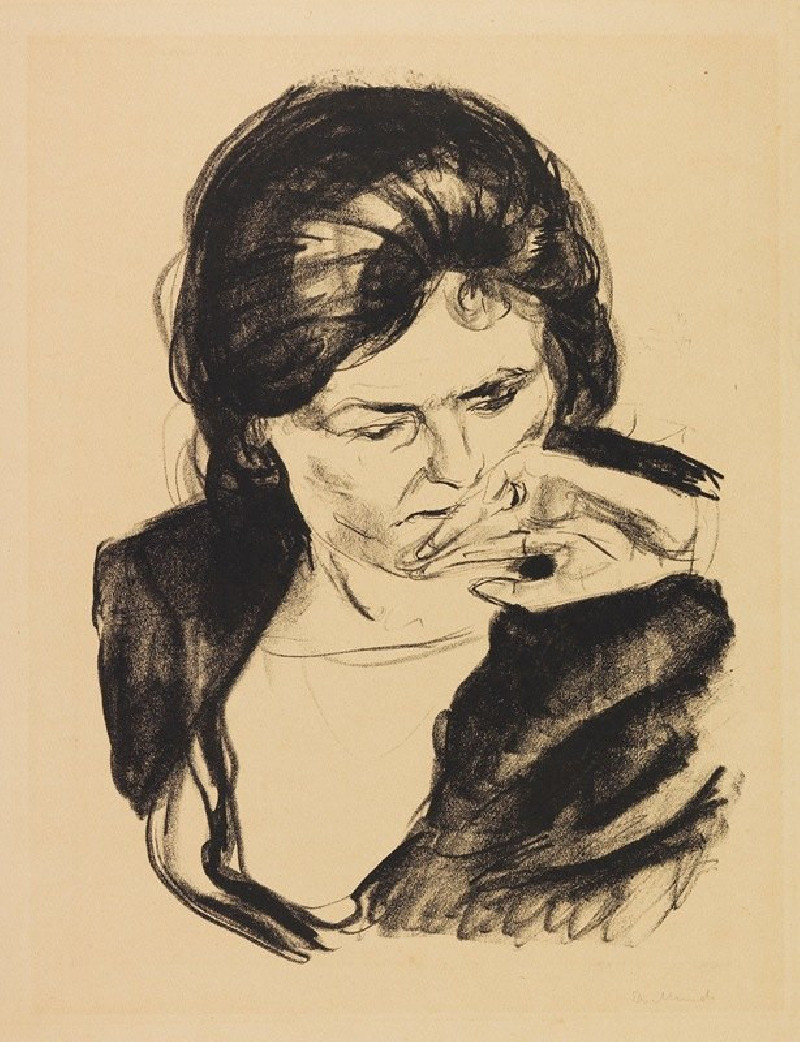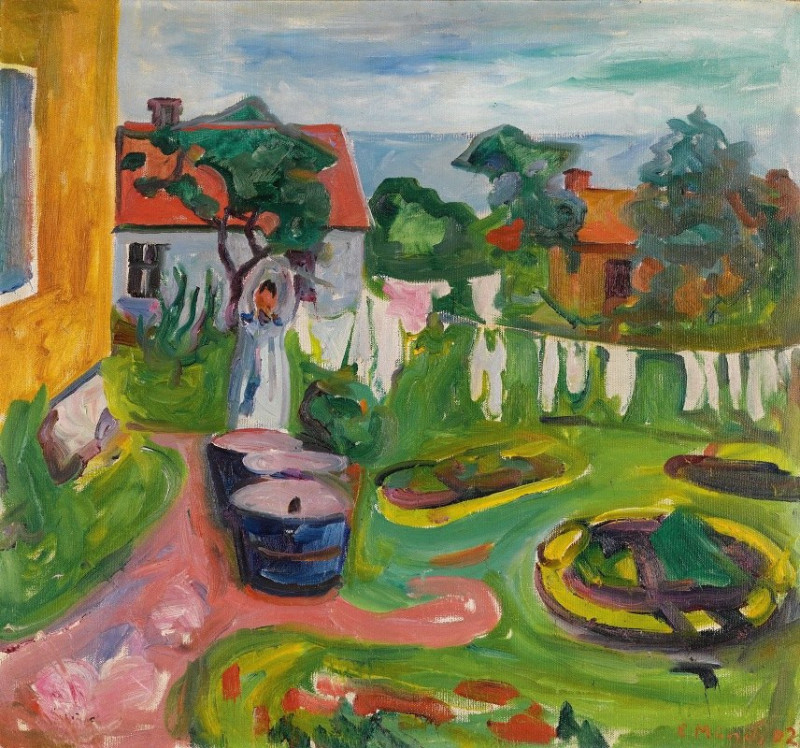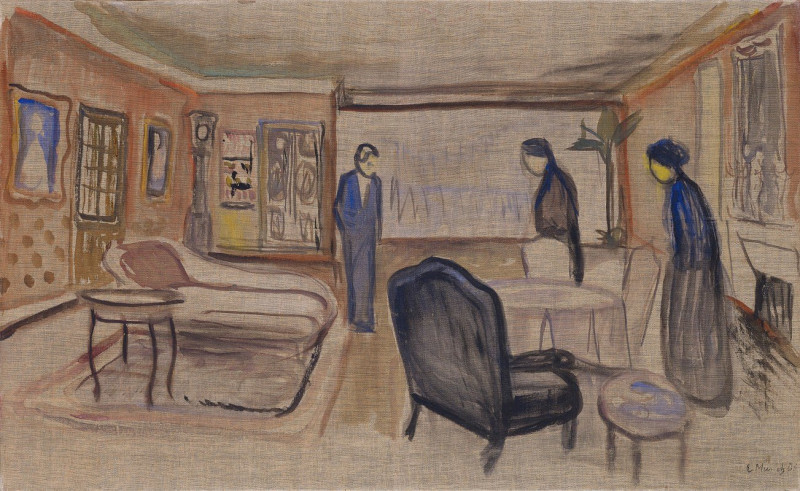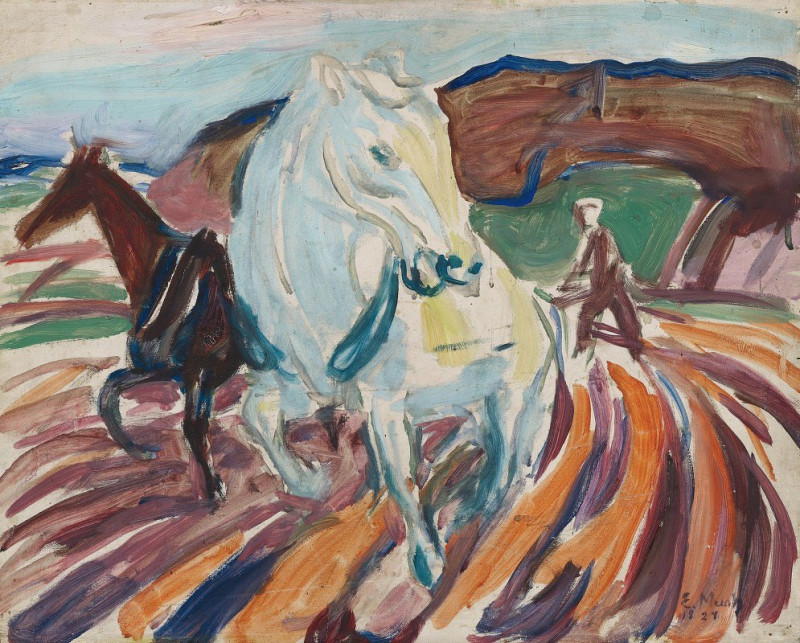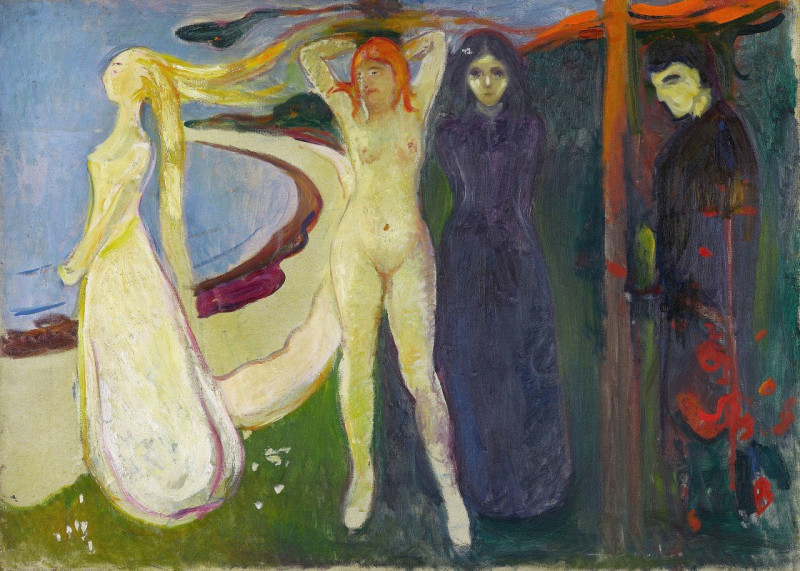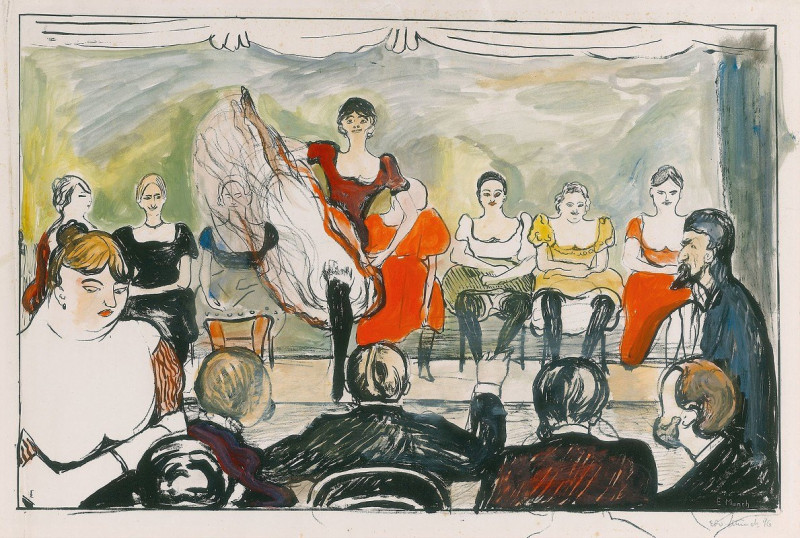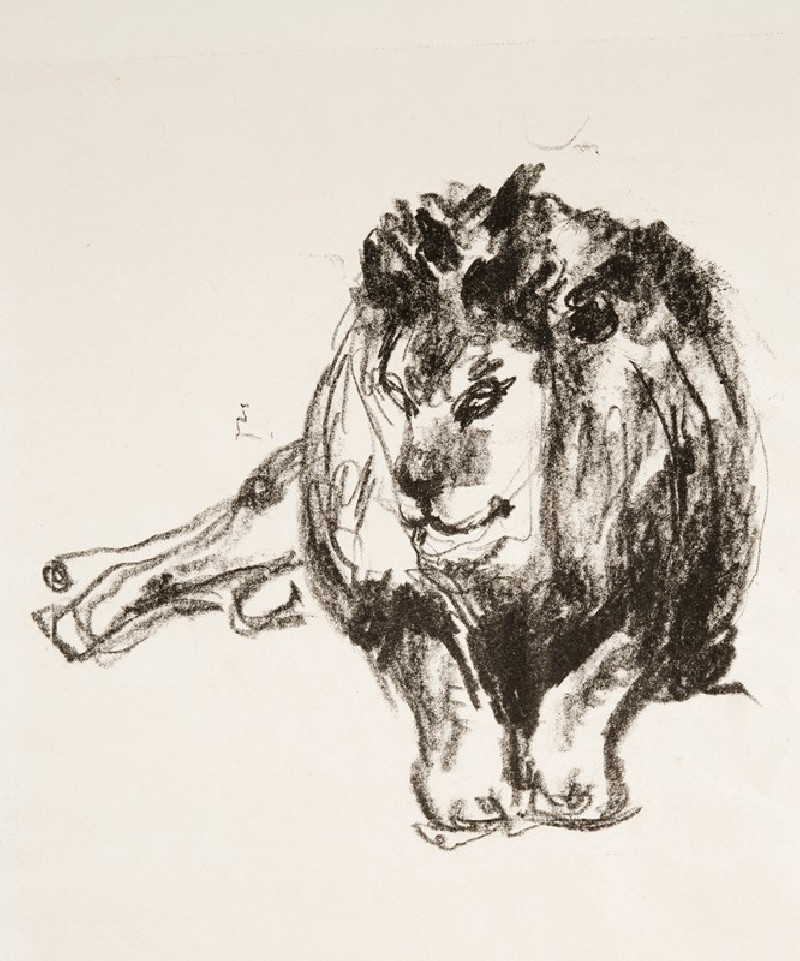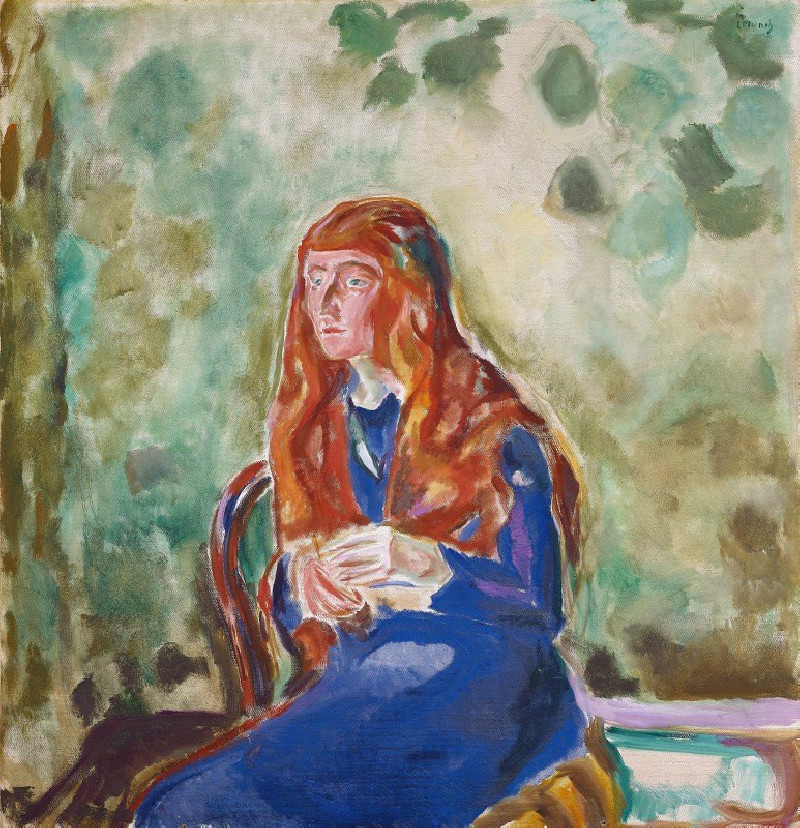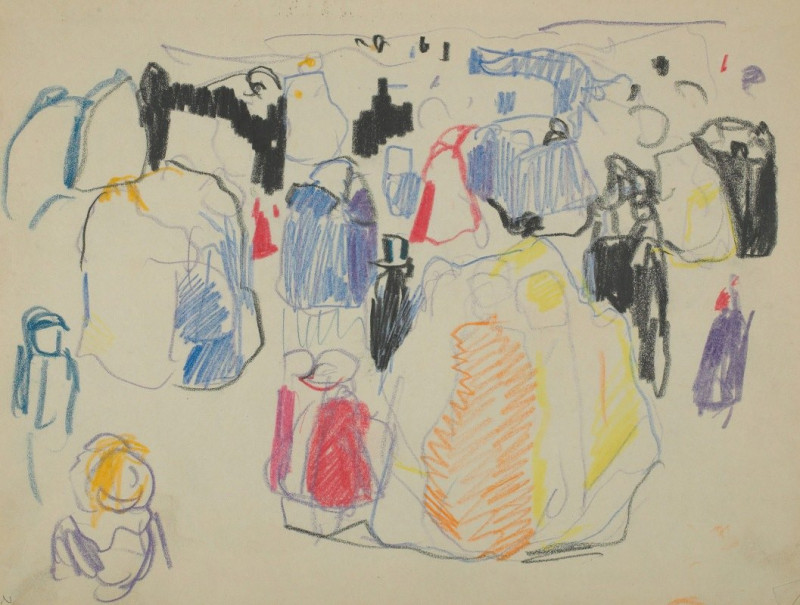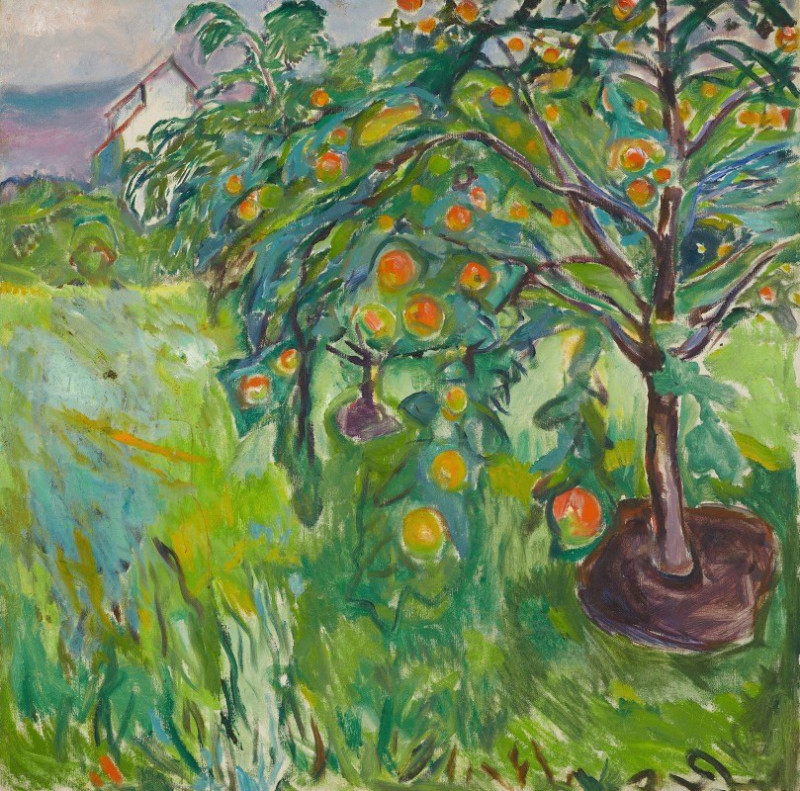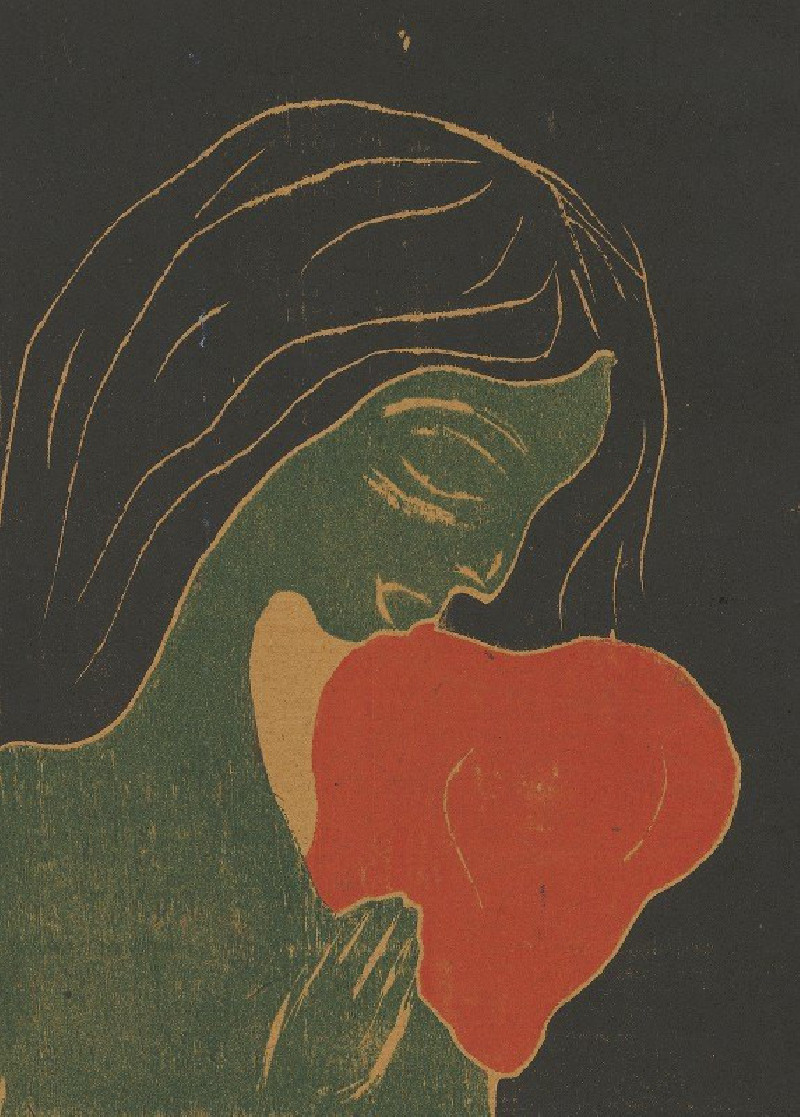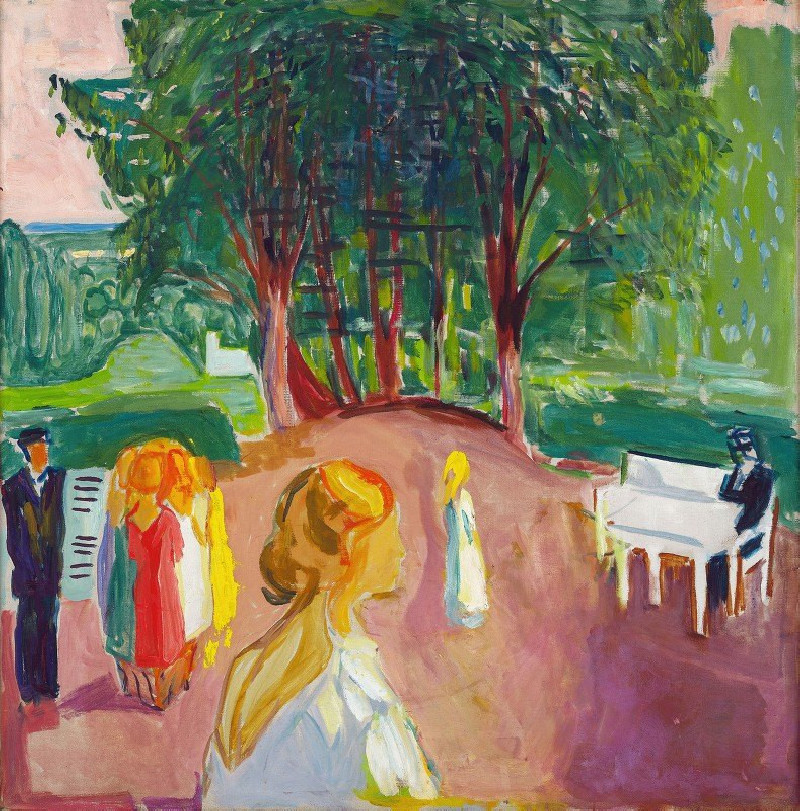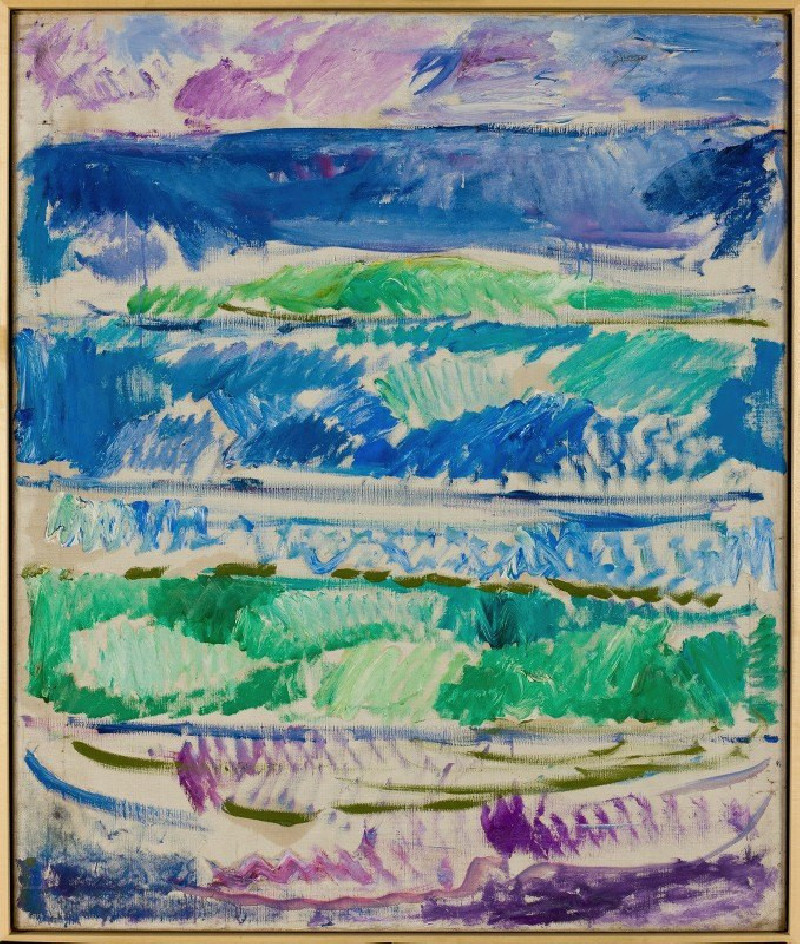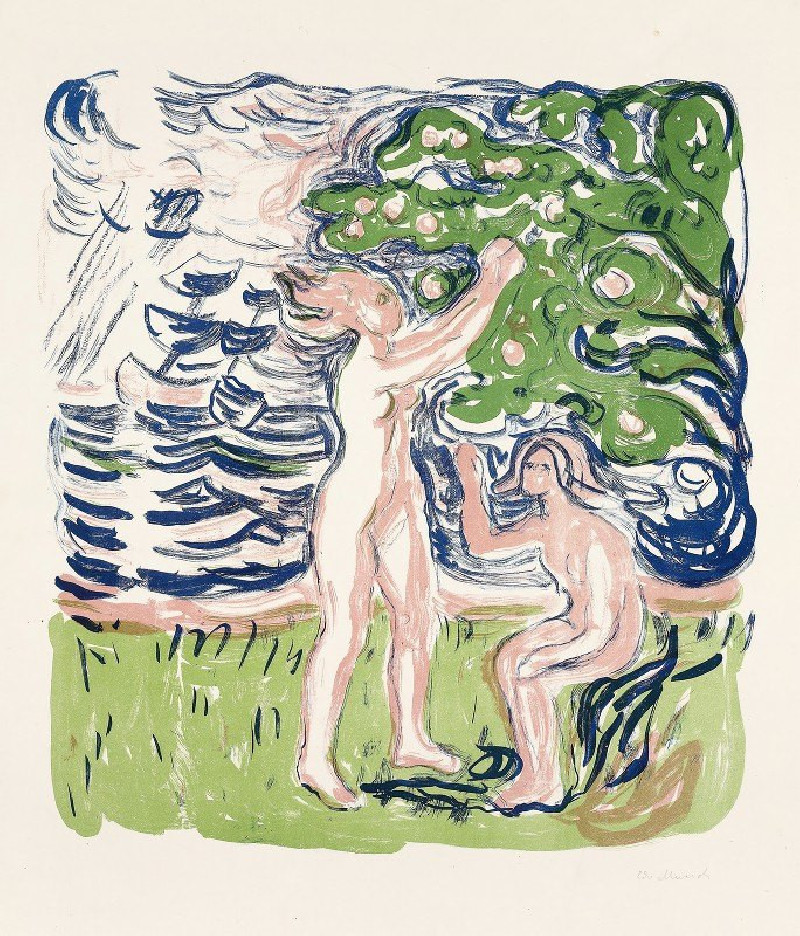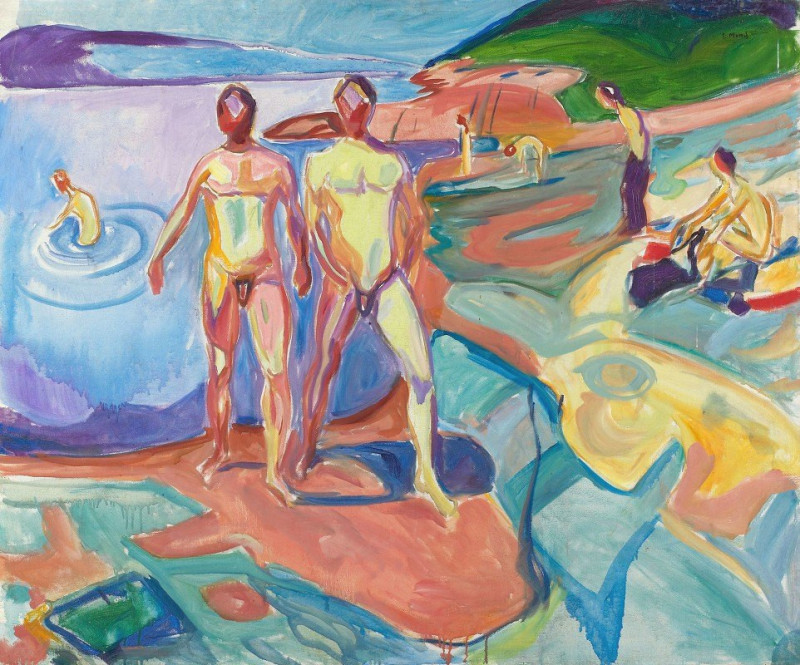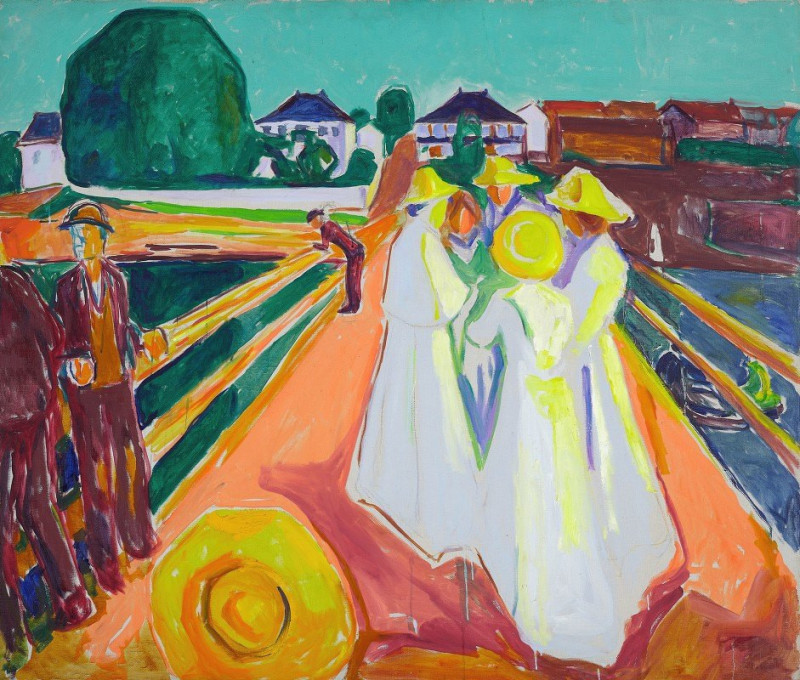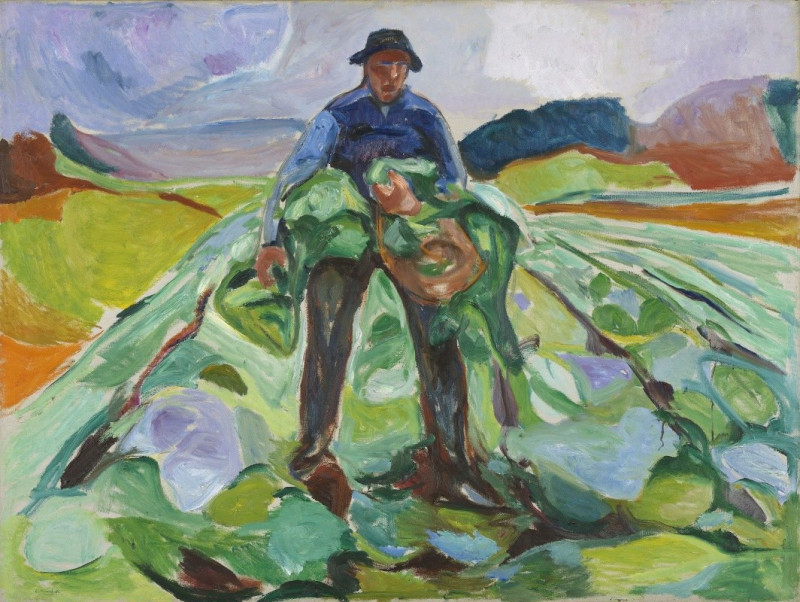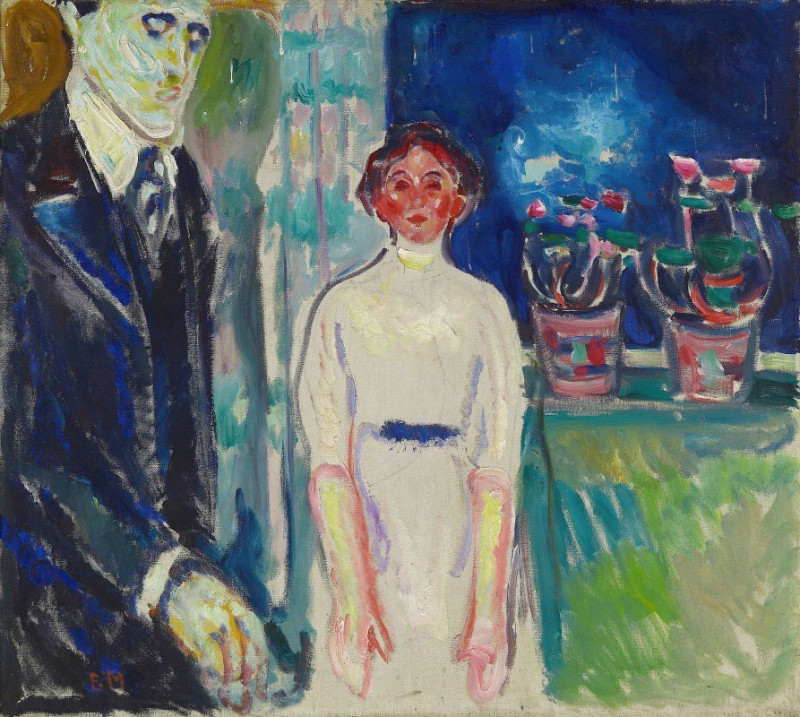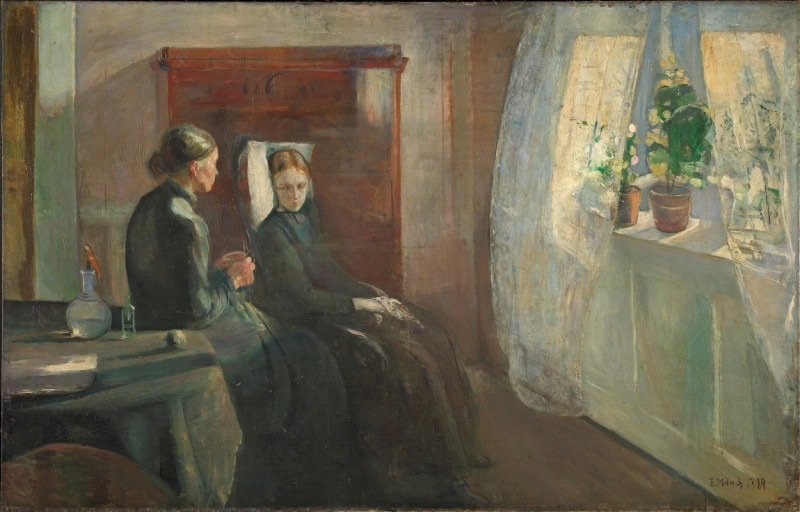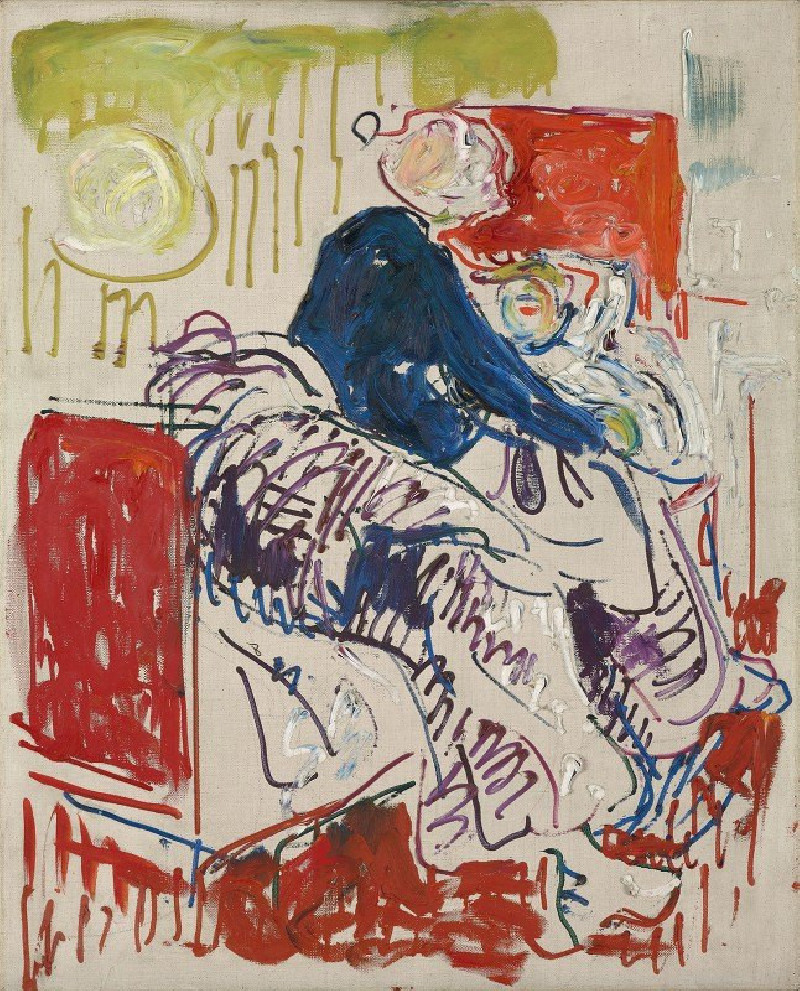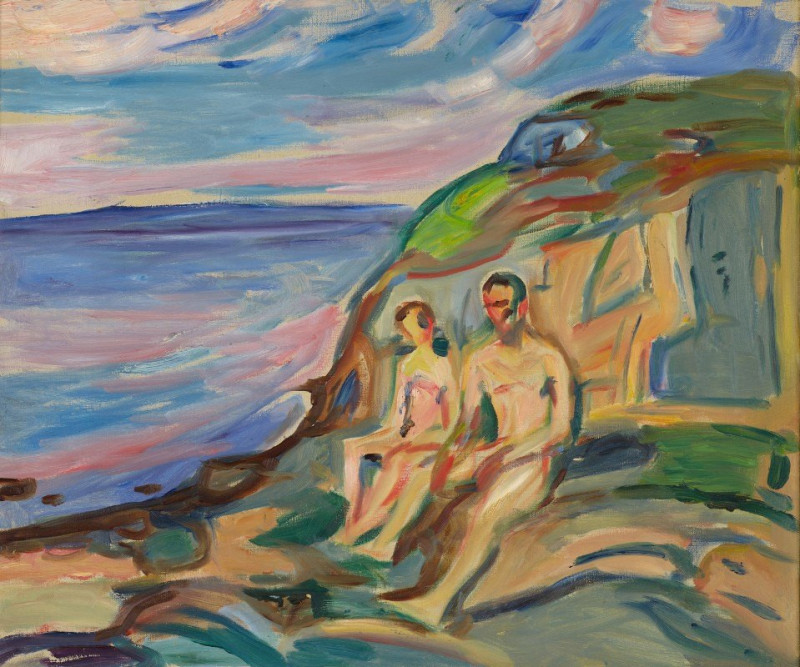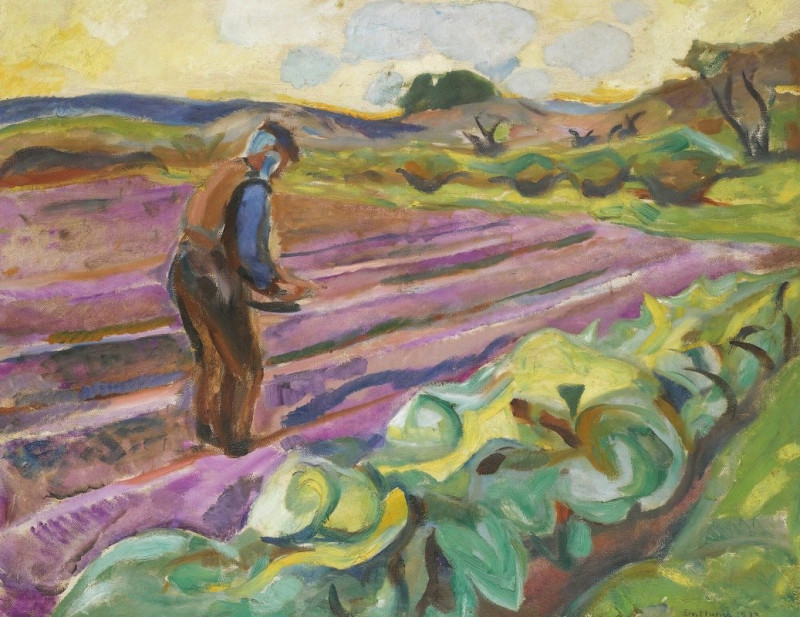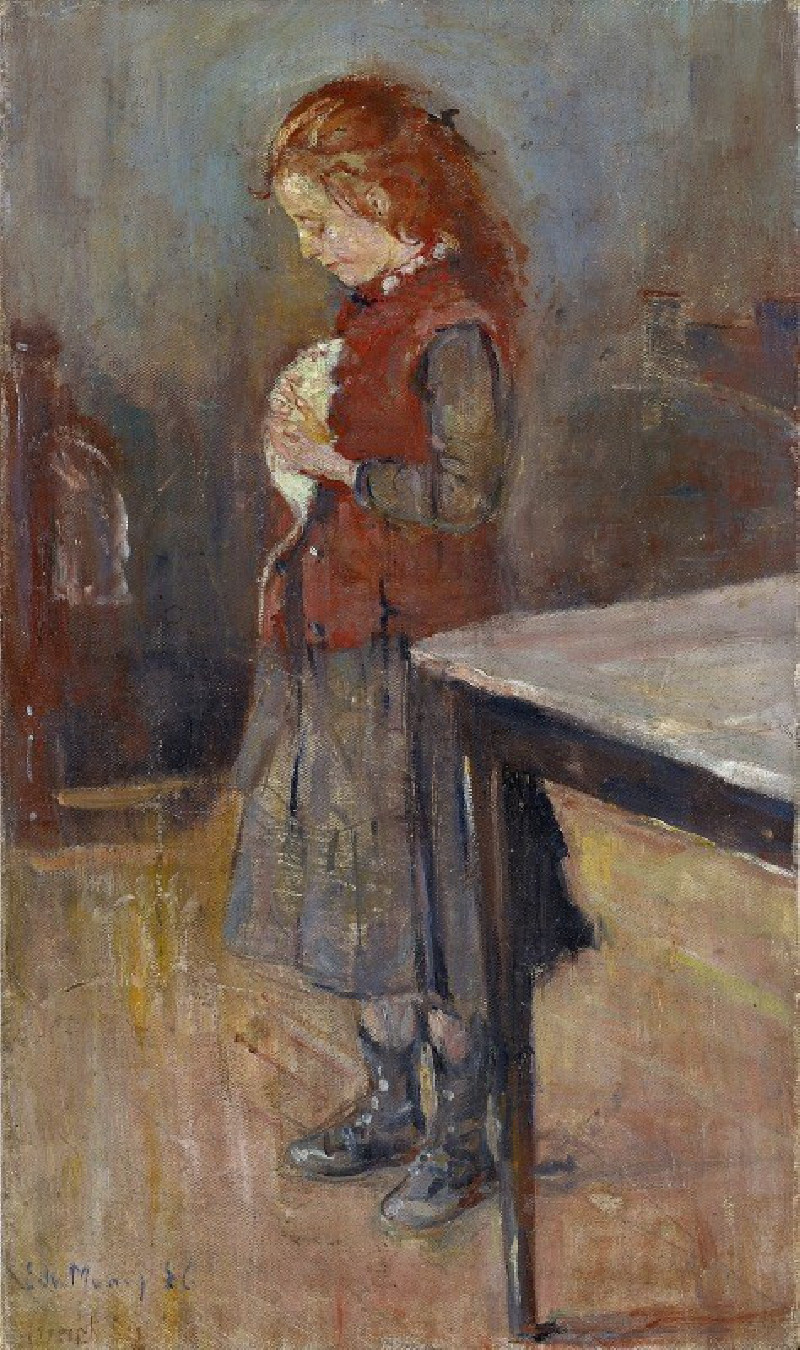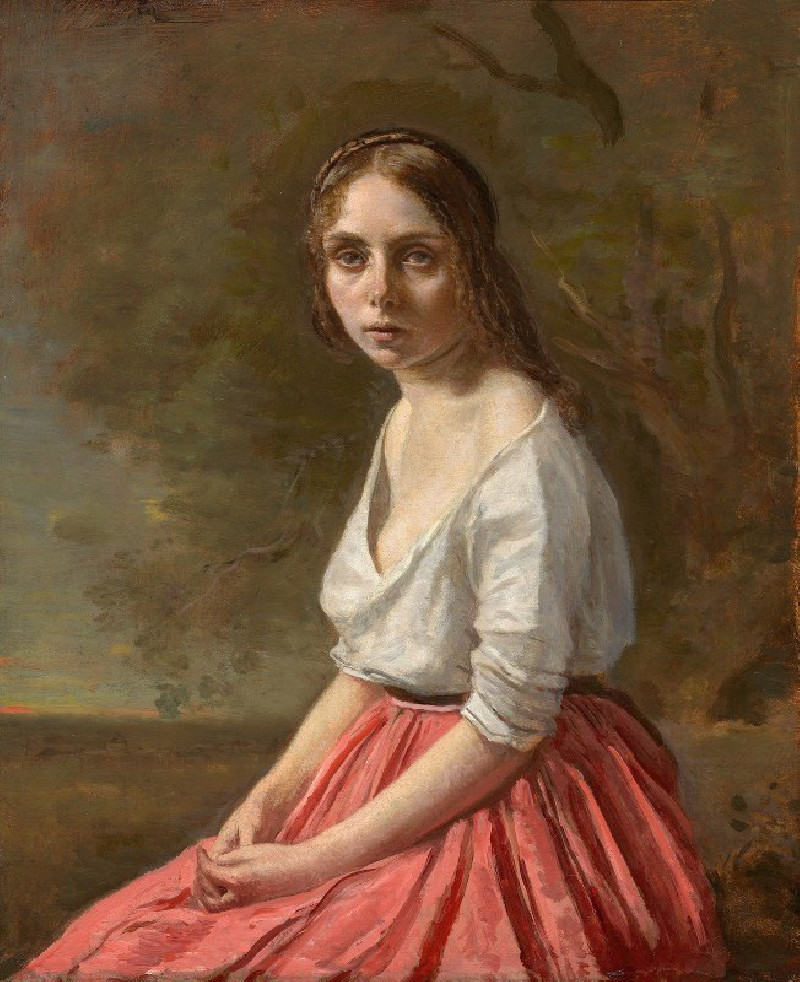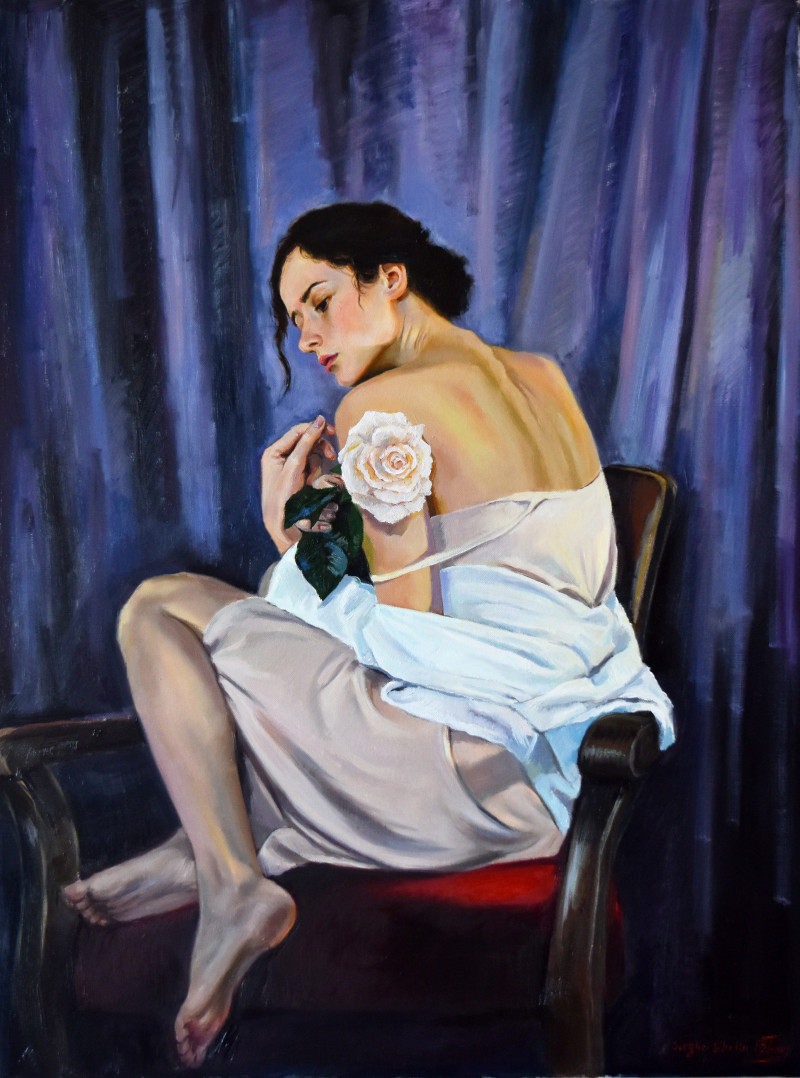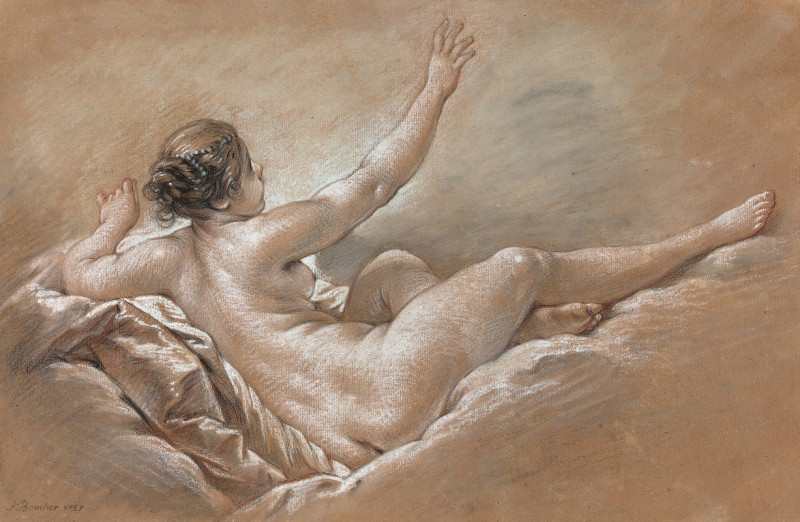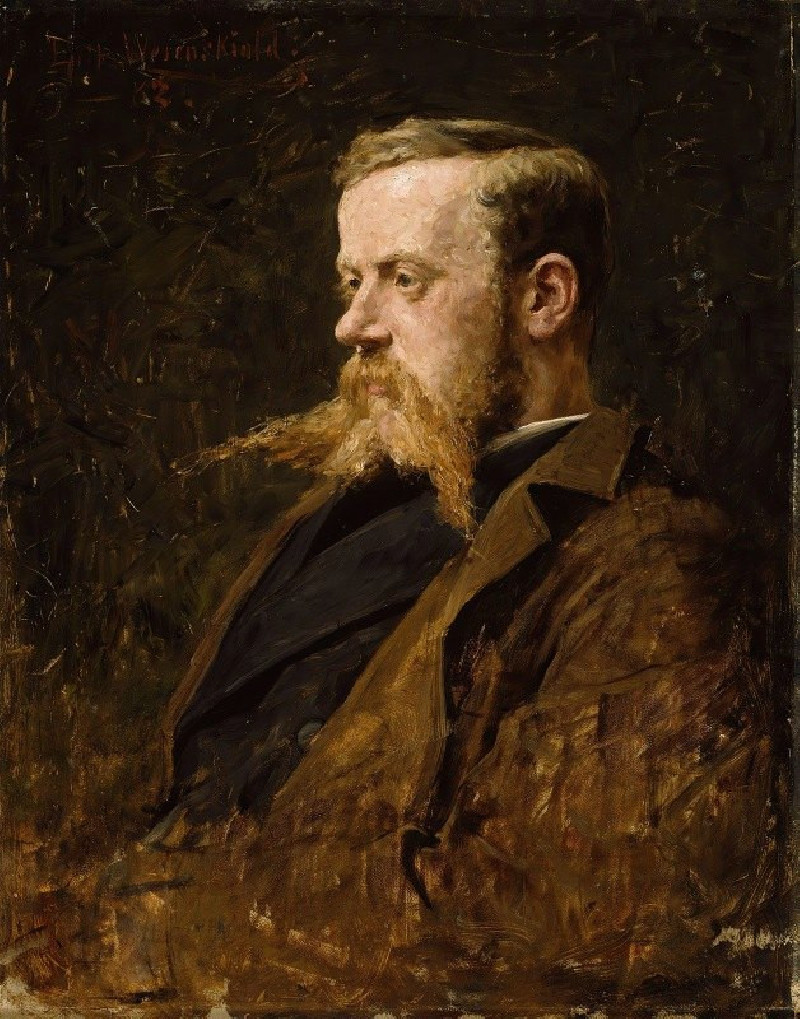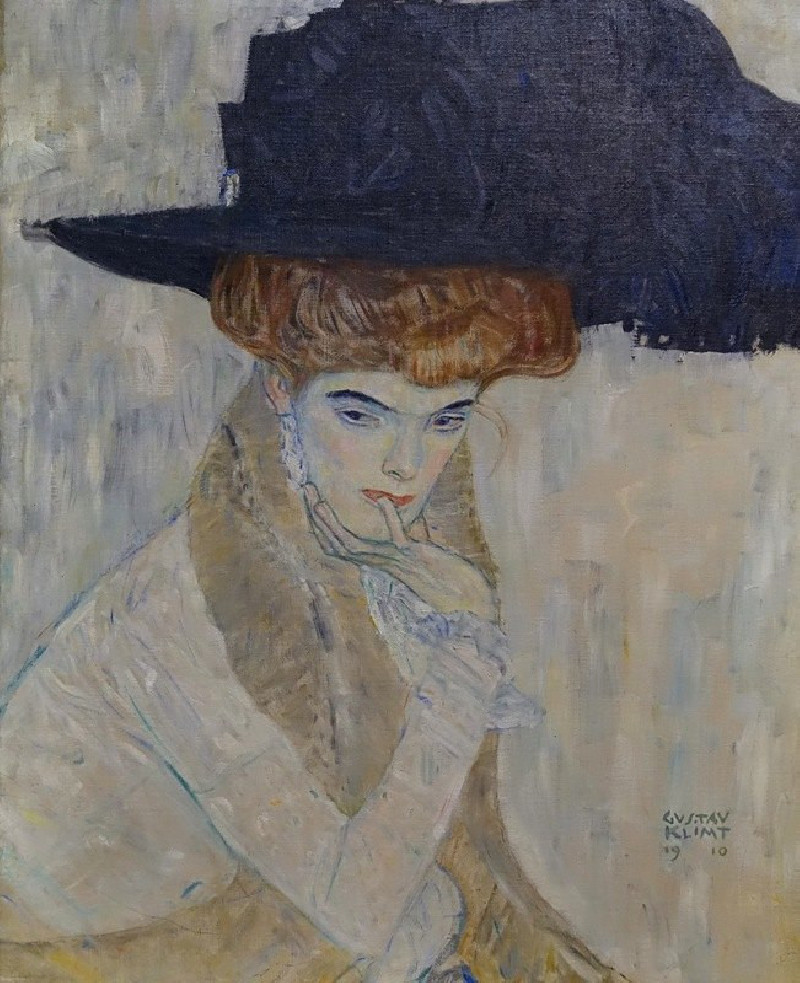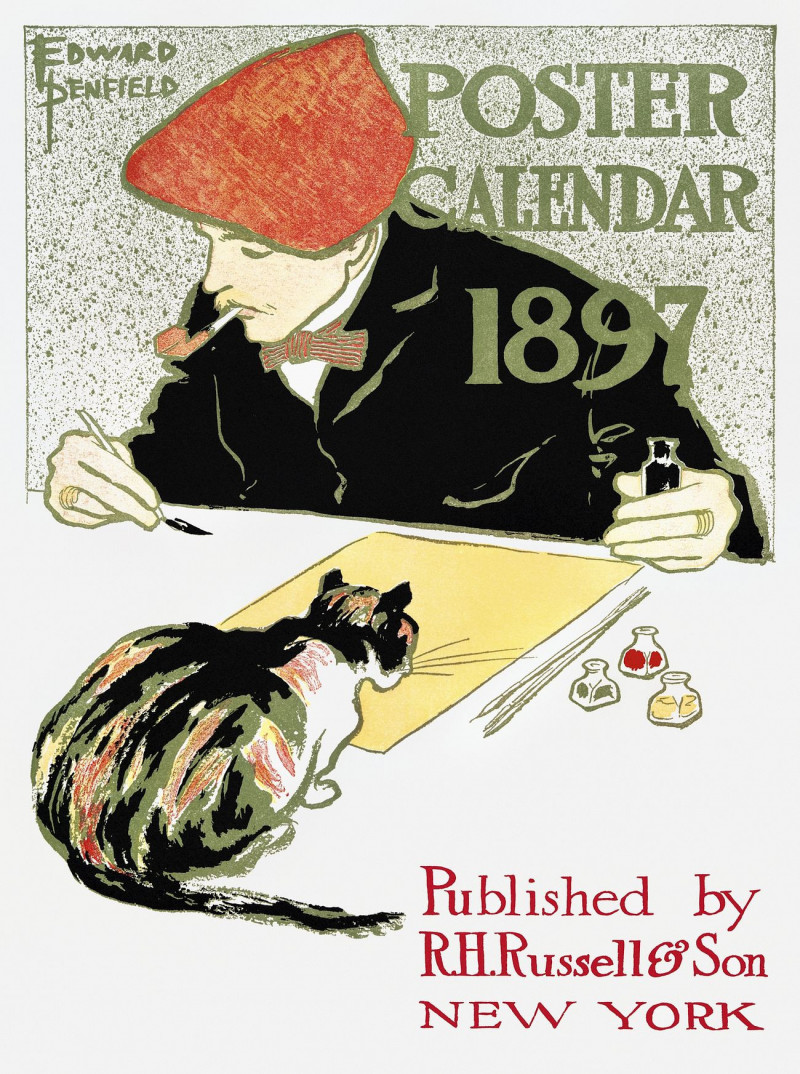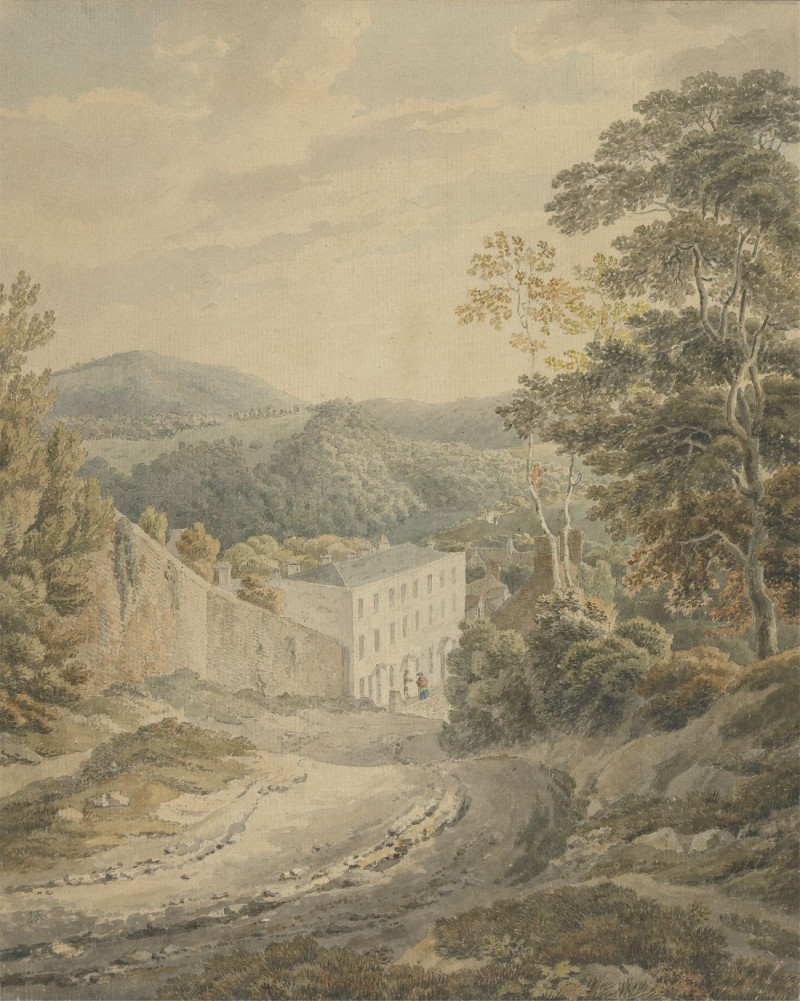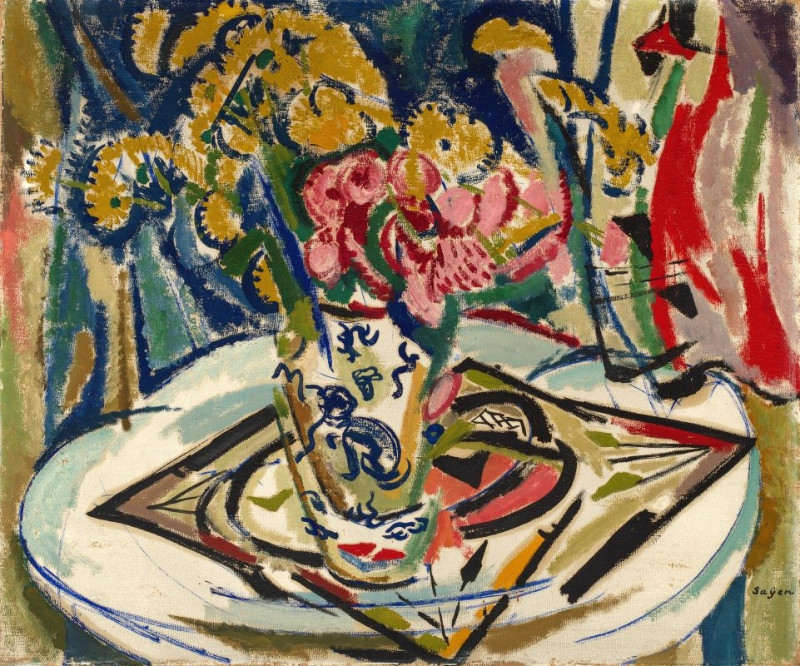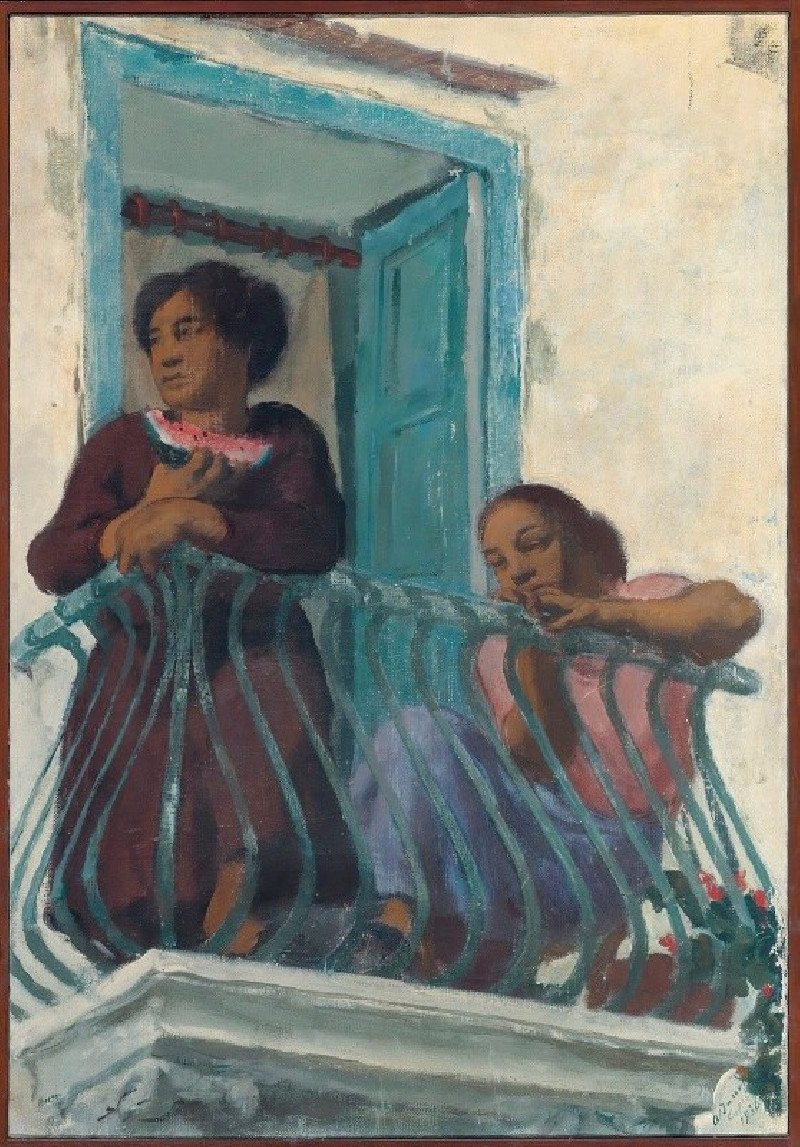Frauenkopf mit der Hand am Mund (1920)
Technique: Giclée quality print
Recommended by our customers
More about this artwork
The artwork "Frauenkopf mit der Hand am Mund" (1920) by Edvard Munch depicts the portrait of a woman, her expression somber and introspective. This lithograph captures her with her hand placed delicately against her mouth, which can be interpreted as a gesture of thoughtfulness or concern. The woman's features are rendered with swift, expressive lines that suggest both the fragility and intensity of her emotions. Her eyes are downcast, adding to the overall mood of contemplation or sadness.Munch’s use of soft yet decisive strokes creates a sense of texture and depth, particularly in how he delineates her hair and clothing. The dark tones on the left side of her face, presumably shadows, contrast with the lighter side, enhancing her facial features and the pensiveness of her gesture. This artwork, like many of Munch's pieces, communicates deep emotional content, capturing a moment of human vulnerability and reflection. It’s a compelling visual study on the human condition, themed around inner emotional life and psychological depth.
Delivery
Returns
Edvard Munch (12 December 1863 – 23 January 1944) was a Norwegian painter. His best known work, The Scream (1893), has become one of Western art's most iconic images.
His childhood was overshadowed by illness, bereavement and the dread of inheriting a mental condition that ran in the family. Studying at the Royal School of Art and Design in Kristiania (today's Oslo), Munch began to live a bohemian life under the influence of the nihilist Hans Jæger, who urged him to paint his own emotional and psychological state ('soul painting'); from this emerged his distinctive style.

